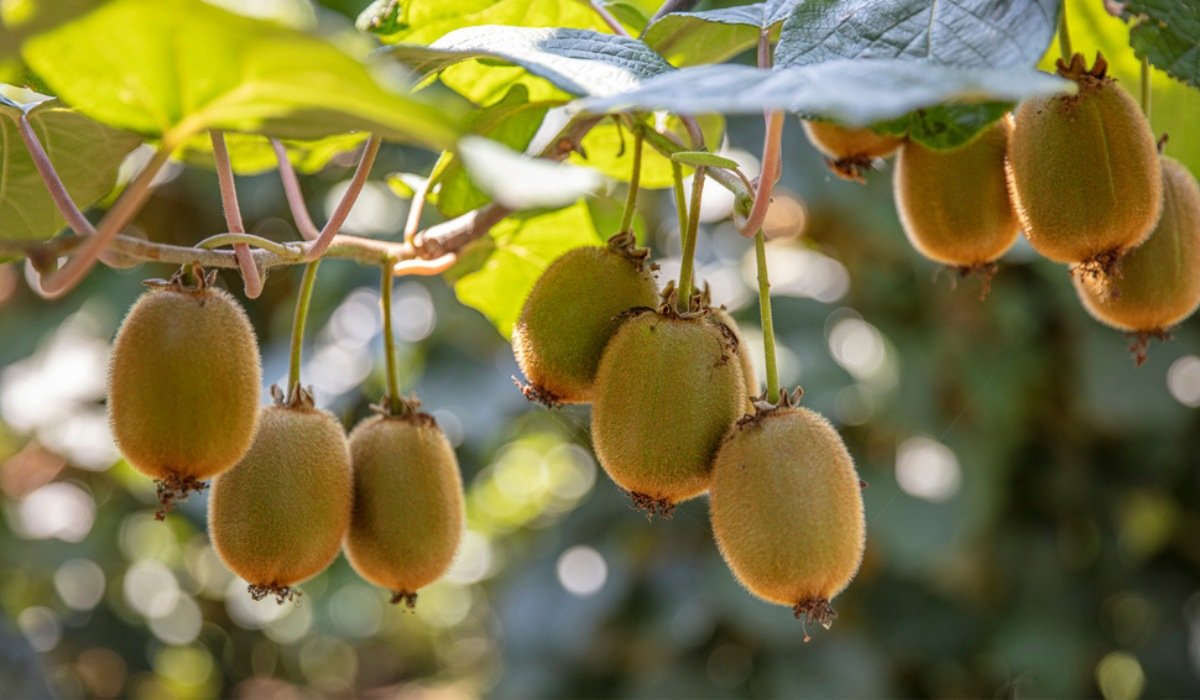How to grow Kiwi plants, Are you eager to add the exotic and delicious kiwi fruit to your garden’s bounty? Growing your own kiwi plants can be a rewarding endeavor, providing fresh, flavorful fruit right from your backyard. In this comprehensive guide, we’ll walk you through everything you need to know about how to grow kiwi plants successfully.
Understanding Kiwi Plants
Before you start planting kiwi vines in your garden, it’s essential to understand the basics of these fruit-bearing plants. Kiwi plants, also known as Actinidia deliciosa, are vigorous climbers native to China but now cultivated in many parts of the world. They are known for their woody vines and large, fuzzy fruits with tangy, sweet flesh.

Choosing the Right Variety
One of the first steps in growing kiwi plants is selecting the right variety for your climate and space. Kiwi plants come in several different cultivars, each with its unique characteristics. Common varieties include Hayward, Bruno, and Issai. Consider factors such as cold hardiness, pollination requirements, and space availability when choosing the variety that suits your garden best.
Site Selection and Preparation
Kiwi plants thrive in well-drained soil and full sun, so choose a location in your garden that receives ample sunlight throughout the day. Before planting, prepare the soil by loosening it to a depth of at least 12 inches and incorporating organic matter such as compost or aged manure to improve fertility and drainage.
Planting Kiwi Vines
Plant kiwi vines in early spring once the threat of frost has passed. Space plants approximately 10 to 15 feet apart to allow for adequate air circulation and room to grow. Dig a hole slightly larger than the plant’s root ball and set it in the ground at the same depth it was growing in its container. Backfill the hole with soil, tamp it down gently, and water thoroughly to settle the soil around the roots.
Providing Support
Kiwi plants are vigorous climbers and require sturdy support structures to thrive. Install trellises, arbors, or pergolas to provide support for the vines as they grow. Secure the vines to the support structure using soft ties or twine, taking care not to damage the tender stems.
Watering and Fertilizing
Keep the soil consistently moist but not waterlogged, especially during the growing season and hot summer months. Mulching around the base of the plants can help retain moisture and suppress weeds. Fertilize kiwi plants annually in early spring with a balanced fertilizer to promote healthy growth and fruit production.

How to Grow Kiwi Plants, Pollination
Most kiwi varieties are dioecious, meaning they have separate male and female plants. To ensure fruit production, you’ll need at least one male plant for every four female plants. Male plants produce pollen, which is essential for pollinating the flowers on female plants and setting fruit. Be sure to plant male and female vines in close proximity for successful pollination.
Pruning and Training
Regular pruning is essential for maintaining the health and productivity of kiwi plants. Prune in late winter or early spring while the plants are dormant to remove dead or diseased wood, shape the vines, and encourage fruiting spurs. Train the vines to grow along the support structure, removing any side shoots that develop below the main framework.
Pest and Disease Management
Keep an eye out for common pests and diseases that can affect kiwi plants, such as aphids, spider mites, powdery mildew, and bacterial canker. Regularly monitor your kiwi plants for signs of infestation or disease, and take prompt action to control and prevent further damage. Utilize organic insecticidal soaps and fungicides as part of your strategy on “How to Grow Kiwi Plants” to effectively manage pests and diseases and ensure the health of your crop.
Harvesting Kiwi Fruit
Kiwi fruit typically ripens in late summer to early fall, depending on the variety and growing conditions. Harvest fruits when they are firm but yield slightly to gentle pressure. Use pruning shears or scissors to cut the fruits from the vine, leaving a short stem attached. Kiwi fruits will continue to ripen after harvest if stored at room temperature.

Conclusion
Growing kiwi plants in your garden can be a rewarding experience, providing you with a bountiful harvest of delicious, nutritious fruits. By following the steps outlined in this guide and providing proper care and maintenance, you can enjoy the sweet taste of homegrown kiwis straight from your backyard. Get started today and embark on your journey to becoming a successful kiwi grower!

